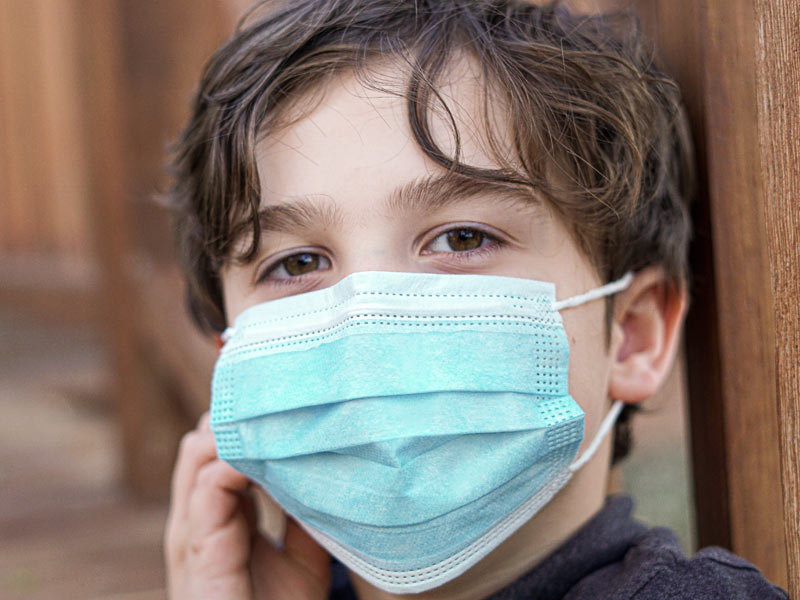
India is in the mid of a third COVID wave with over two lakh cases being daily reported for the past six days. Just like the Delta variant during the second wave in March-May 2021, the third wave is accompanied by the rapid spread of Omicron, a heavily-mutated, fast-spreading COVID variant, which was first identified in South Africa and is a ‘variant of concern’, as classified by the World Health Organisation (WHO). With COVID spreading fast, it’s crucial to take all necessary precautions against the novel coronavirus. Although it has been a year since India started its mass vaccination drive against COVID, there is still a section of population that is still ineligible for the jab. The Central government hasn’t opened vaccination for those below the age of 15. Highly vulnerable are the infants and young children who cannot wear masks and need constant care by the elders. So, what is the way to protect them from being infected? To get an answer to this question, Onlymyhealth spoke to Dr Rakesh Tiwari, Senior Consultant, Pediatrics, Paras Hospitals, Gurugram.
Table of Content:-
According to Dr Tiwari, infants are at a less risk of contracting COVID infection. It’s because “they are not that mobile and usually stay in secure environment of their home,” he said. “They can only get exposed if any family member is infected and is in close contact,” the doctor added.
How To Protect Kids From COVID-19?

(Photo Credit: Unsplash)
The new Omicron variant is spreading fast in India. Hence, it’s crucial to protect kids both at home and otherwise. Hence, as per Dr Tiwari:
- The way to protect kids from COVID is to avoid taking them to crowded spaces where the risk of infection is considerably high.
- Kids over the age of five should be encouraged to wear masks, if they’re able to, whenever they go out.
- Encourage them to take care of their hand hygiene by teaching them how to wash their hands thoroughly with soap and water.
- Tell them not to touch their nose and mouth frequently.
Also read: From Symptoms To Treatment: 7 Questions On Omicron COVID Variant Answered
What If The Mother Of An Infant Tests COVID Positive?

(Photo Credit: Unsplash)
In India, the mother is generally the primary caregiver of a child. In case she tests positive for COVID:
- She should wear an N95 mask while breastfeeding her baby.
- The mother should wash her hands thoroughly with soap and water before touching her baby.
- Equally important for her is to take care of her breast hygiene.
- The newborn can stay in the same room as her mother, if there is no other option, but there should be at least six feet distance with the baby’s cot.
- If possible, a COVID negative family member should take care of the baby and bring him/her to the mother only for breastfeeding.
- All the other family members should follow COVID-appropriate behaviour at home.
- The mother can take her medicines as prescribed by the doctor while breastfeeding.
What If A Family Member Tests Positive For COVID?
The mother is the primary caregiver. However, she isn’t the only family member the baby spends time with at home. If a member of a family that has an infant tests positive for COVID, the first thing the member should do is to self-isolate.
- Also, the child should be watched for COVID symptoms such as:
- Cough
- Cold
- Fever
- Throat pain
- Headache
- Nausea
- Vomiting
- If needed, consult your pediatrician before going for any tests as blood tests aren’t routinely recommended for children.
- One shouldn’t worry much as illness among kids is generally mild, except for some kids who experienced high fever spikes and didn’t respond to paracetamol. Many kids also suffered from convulsions along with fever and dehydration.
Also read: Omicron Variant: Home Care Guide Explained By Expert
Hence, it’s crucial to stay in touch with the doctor and follow his/her advice sternly. Other than these, the family members should stay safe so that they not only protect themselves, but the kids also. Hence, wear masks, take good care of your hand hygiene, avoid crowded spaces and practice social distancing. These are crucial to stay protected against COVID.
(With inputs from Dr Rakesh Tiwari, Senior Consultant, Pediatrics, Paras Hospitals, Gurugram)
Photo Credit: Unsplash
Also watch this video
How we keep this article up to date:
We work with experts and keep a close eye on the latest in health and wellness. Whenever there is a new research or helpful information, we update our articles with accurate and useful advice.
Current Version